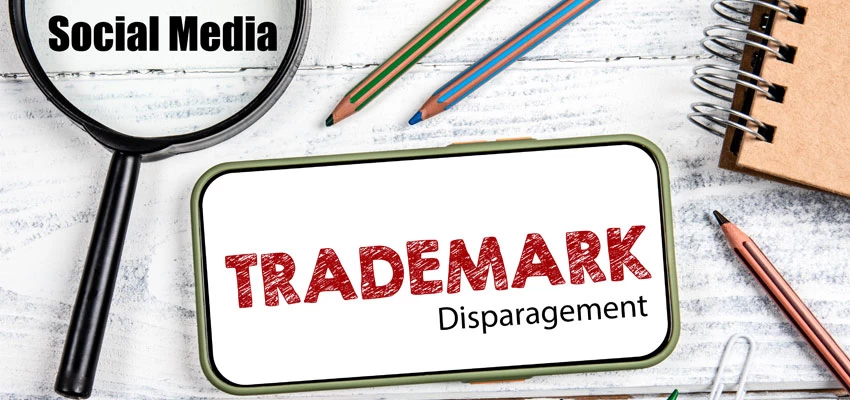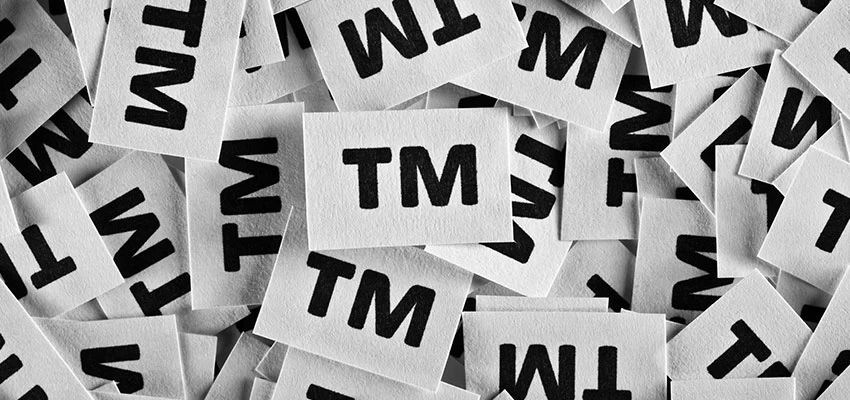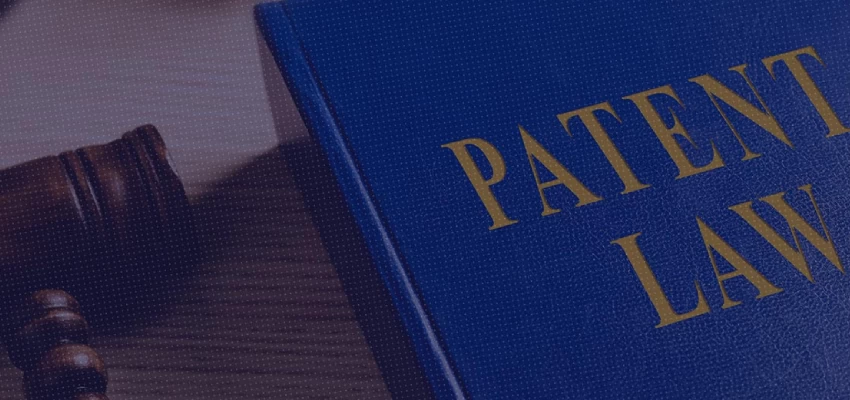Introduction
Trademarks are essential for protecting one’s brand’s identity and ensuring that the goods or services stand out in the market. However, not using trademarks can result in losing rights. A trademark is successfully registered and enters the Register of Trade Marks after going through several stages. Registration gives statutory validity to a trademark and provides blanket protection for it to be used by an individual or entity. There are chances that many such trademarks entering the Register might not be put to use in the course of trade for the goods/services it has been registered for. The existence of such a mark on the Register of Trade Marks may be harmful to traders who have been using or intend to use similar or identical marks for similar or identical goods/services.
Rectification of the Register of Trade Marks refers to the process of cleansing off or cancelling of marks from the Register, which do not rightfully belong in the Register, as they may prevent and cause harm to the commercial interests of bona fide users of the similar or identical marks. Such a mark may cause harm if it has been registered without any intention of being used, as it can prevent and block bona fide users of similar or identical marks from using their marks for similar goods/services.
Non-use of a trademark
A trademark acts as a symbol of identity of a product/good/service being sold and the owner/proprietor of such product/service. When a trademark is applied for registration, the applicant of the trademark has to specify the goods and/or the services for which such a mark is being applied for. The same may be applied on a proposed to be used basis or the applicant may claim prior date of usage of such mark- which has to be corroborated by showing that the trademark applied for had been in use before the date of application. Use of a mark in commercial transactions for such goods and/or services generate the reputation and goodwill for the mark. Use of a trademark can be proved when the goods sold or the services rendered consist of the trademark over such goods or services. The easiest way to show that a trademark is commercially used is via documents such as invoices, bills, purchase orders, agreements, etc. showing that the trademark in question is being used for the goods and/or services it has been applied/registered for. Documents/extracts advertising such marks may be considered as secondary documents showing the intention of the applicant to use its mark in relation to the advertised goods/services. When a trademark has been applied for, or registered, but the same has not been used or has not been continuously used commercially, for a period of five years and three months, such a mark is said to be not used in the course of trade- and such a trademark then becomes liable to be cancelled on the grounds of non-use mentioned in Section 47(1) of the Trade Marks Act, 1999 (‘Act’).
Legal framework for non-use cancellation
Section 47 (1) of the Trade Marks Act, 1999 supplies the provision of removal of a trademark from the register on grounds of non-use. As per Section 47(1), a registered trademark can be cancelled by an aggrieved person by filing an application for rectification/cancellation in the prescribed manner to the Registrar of Trade Marks or the High Court if:
The registered proprietor of the trademark has registered its mark without any bona fide intention of using the mark, and in reality, there has been no bona fide use of the said mark by the registered proprietor for the goods/services for which it was registered.
OR
The registered mark, after it entered the register, has not been used for a continuous period of 5 years and 3 months prior to filing of the rectification/cancellation application.
However, if the proprietor of the registered mark was allowed registration under Section 12 of the Act to register a similar trademark for the same goods or services, i.e., there has been honest concurrent use of a mark, or if the Registrar or the High Court deems it appropriate, it can deny a rectification/cancellation application. Such denial of a rectification/cancellation application is done only if it's proven that the trademark has genuinely been used by the proprietor for similar or associated goods or services before the relevant date of filing the rectification application.
The Delhi High Court ruling[1] on the ‘Al-Walimah rice brand’ dispute examines Section 47(1) of the Act, providing clear explanations of its various components. Before diving into the detailed analysis, we briefly recap the facts to set the stage for a closer look at the key aspects leading up to the ruling’s main point.
The Delhi High Court ruling
Facts of the case
The Petitioner filed an Application before the Delhi High Court under Section 47 of the Act to remove Respondent No.1’s trademark ‘AL-WALIMAH’ registered under TM No. 523217 dated 22 January 1990 in Class 30 for selling of rice (which had been filed with a user claim since 1 April 1975). Notice was issued to Respondent No.1 but there was no appearance and Respondent no.1 was proceeded ex parte. During the pendency of the instant matter, two of the Petitioner’s marks:

and got registered in the favour of the Petitioner, for goods in Class 30, namely, rice.
Submissions of the Petitioner
The Petitioner company was founded in the year 1959 in the Kingdom of Saudi Arabia and had adopted and used the mark ‘AL-WALIMAH’ since the year 1980 in the Middle East. Over the years, they have garnered a significant reputation and goodwill in the Middle East for the trading, distribution and marketing of rice. The Petitioner entered into business relations with Respondent No. 1, and as per a proforma invoice dated 9 May 1995, placed an export order of 4950 metric tonnes of rice from the Respondent No. 1, who were at the time aware of the Petitioner’s ‘AL-WALIMAH’ mark. Thereafter, a few years later, the Petitioner applied for registration of five of its trademarks in India. However, all those marks were opposed by Respondent No. 1 on the basis of its registration of the mark ‘AL-WALIMAH’ under TM No. TM No. 523217 which the Respondent had, in the absence of the Petitioner’s knowledge, dishonestly filed for on 22 January 1990, in India, and got the same registered.
During the pendency of the instant matter, two of the five marks of the Petitioner got registered in favour of the Petitioner. Respondent No. 1 thereafter stopped appearing for the Opposition hearings and did not appear in the instant matter. Further investigation of the matter conducted by the Petitioner also revealed that none of the relevant/concerned people were familiar of the Respondent No. 1’s ‘AL-WALIMAH’ mark.
Triple Test for removal of a mark
The Delhi High Court observed that the principal question to be answered in the instant petition was whether the mark of Respondent No. 1 was liable to be removed under Section 47 of the Act on the grounds of non-use. Analysing the matter at hand, the triple test for determining whether a mark can be removed from the Register was brought into play, which mainly states as follows:
- First test: Whether the rectification application is filed by a ‘person aggrieved’: A person aggrieved has been defined to be someone whose interest is affected in some possible and actual manner, and a mere fanciful/imaginary suggestion of grievance shall not render the person as aggrieved. There must be a likelihood of some injury or damage to the applicant (who has applied for the rectification) by such trademark remaining on the register. Only then the person will have the right or capacity to bring an action, i.e., will have locus standi to file for rectification of the mark. The ruling further stated that, ‘The persons who are aggrieved are all persons who are in some way or the other substantially interested in having the mark removed—where it is a question of removal—from the register; including all persons who would be substantially damaged if the mark remained, and all trade rivals over whom an advantage was gained by a trader who was getting the benefit of a registered trade mark to which he was not entitled.’
The Court observed that in the instant matter, the Petitioner, being the user of the mark ‘AL WALIMAH’ in various countries in the Middle East, and presently being the holder of the two trademark registrations in India for the same, and the Respondent No.1 opposing the Petitioner’s applications for registrations— made the Petitioner ‘evidently a person aggrieved’ under Section 47 of the Act.
- Second test: That the trademark has not been used by the proprietor for a continuous period of at least five years and three months prior to the date of the rectification application. In the instant matter, the investigation report submitted by the Petitioner played a pivotal role, as it prima facie revealed that there was no use of the mark ‘AL WALIMAH’ for selling of rice under Class 30 by the Respondent No. 1. Even market survey revealed that there was neither any rice product under the ‘AL WALIMAH’ mark sold by the Respondent No. 1, nor was any relevant person involved in the channels of distribution of the rice or the business circles dealing with rice, such as shopkeepers in the concerned areas, had any idea regarding the mark ‘AL WALIMAH’ being used by the Respondent No. 1 to sell rice.
Further, none of the submissions of the Petitioner with regard to the Respondent No.1’s non-use of the ‘AL WALIMAH’ mark was repudiated or denied by the Respondent No. 1. Neither did Respondent No. 1 file any response to defend the instant petition which was filed by in the year 2017. On the basis of the same, it was observed that the mark ‘AL WALIMAH’ of Respondent No. 1 was not used for a continuous period of five years and three months before the instant rectification/cancellation petition was filed- clearing the second test on validating the Petitioner’s claim. It was further observed that no other evidence was required from the Petitioner, as the Respondent No. 1 had chosen not to appear even though they were served, and that in the absence of denial by the Respondent No. 1, the court had no reason to disbelieve the pleadings of the Petitioner, or the investigator’s affidavit on record.
- Third test: That there were no special circumstances which affected the use of the trademark during this period by the proprietor. The Court further upheld the observations made in Russell Corpn. Australia Pty. Ltd. Ashok Mahajan[2], which stated that, ‘In the context of non-use, it is the settled legal position that use has to be genuine use in the relevant class of goods and services. Unless the non-use is explained by way of special circumstances, the mark would be liable to be removed for non-use. In the present case, no special circumstances have been cited and, in these facts, the mark would be liable to be removed on the ground of non-use itself.’- therefore, the Petitioner was in a position of having cleared the third hurdle. It was further observed by the Court that, as there were business relations between Respondent No.1 and the Petitioner in relation to export of rice, it was quite possible that Respondent No.1 applied for registration of the ‘AL WALIMAH’ mark and procured the same without Petitioner’s knowledge. Further, as per the Petitioner, the mark ‘AL WALIMAH’ was an Arabic word having a specific connotation, being used extensively in the Middle East by the Petitioner for rice, and hence the mark had no association with Respondent No. 1.
In view of the above, the Court decided that the rectification/cancellation petition was rightly filed under Section 47 (1) of the Trade Marks Act, 1999. Observing that there was no bona fide use of the ‘AL WALIMAH’ mark by Respondent No.1 in relation to goods in Class 30, particularly, ‘rice’, the Court directed the Trade Marks Registry to cancel the Respondent No. 1’s registered ‘AL WALIMAH’ mark in Class 30 for rice, under TM No. 523217.
From the above case it is understood that using trademarks consistently is crucial because it protects the brand and ensures that its identity remains unique and recognizable. It maintains the legal rights and keeps the statutory right on the trademark intact and deters unauthorized third-parties from attempting to use or register a similar trademarks. In view thereof, the trademark proprietors must be vigilant in using their marks and maintaining proper records of use. Failure to do so can result in loss of trademark rights.
Steps to avoid non-use cancellation
To avoid non-use cancellation of trademarks, owner of the trademark can implement following strategies:
Commercial use: Ensure that the trademark is consistently used in commerce. Regular use of the trademark in marketspace in connection with goods and services for which it is registered will diminish the effect of non-use cancellation being filed against the mark. It can be done by selling goods, rendering services or conducting business under the trademark. Ensure that the trademark is used across different regions to strengthen the argument for its active use. Further, using the trademark in advertising materials, online presence and promotional activities is also advised. If there are legitimate reasons for non-use due to economic hardship, temporary business closures etc., one should provide evidence and a clear explanation to the Trade Mark Registry.
Documentation of use: Keep detailed records of how and where the trademark is used, by maintaining records of sales, invoices, shipping documents and transaction records. Keep copies of advertisements, brochures, website screenshots, social media posts and other promotional materials. Preserve emails, letters, and other communications that demonstrate the use of the trademark in commerce. These documents can be crucial in proving bona fide use if the trademark is ever challenged.
Licensing of trademarks: One may consider entering into licensing agreements with third parties to use the trademark and ensure that the licensee is actively using the trademark in accordance with the terms of the agreements. By actively monitoring and enforcing the quality and use of the trademarks by licensees, one can maintain the trademark’s integrity and commercial presence. Creating sub-brands or related brands that utilize the primary trademark in different ways across the various classes can further solidify the presence of the trademark in the market.
Monitoring and enforcing trademark rights: Keep track of Trademark Journals published by Trade Mark Registry fortnightly to monitor for unauthorized use or infringement of the trade mark. Prompt action in addressing any potential unauthorized use or infringement will prevent the trademark from non-use cancellation, demonstrating the interest in protecting the trademark’s distinctiveness and commercial value.
Maintaining goodwill: Use the trademark across various goods or services to demonstrate its active use in different markets. Engage with customers and public to build and maintain brand recognition and loyalty. Conduct campaigns for public and engage in community activities to reinforce the presence and use of the trademark. Conduct regular market research to understand recent trends and to adjust business strategies accordingly to ensure the trademark remains relevant and consistently used in commerce. Meet the market demands by innovating and adapting goods or services to ensure the continued use and relevance of the trademark.
Renewing trademark: File timely renewal applications to demonstrate continuous use and intention to maintain the trademark. Ensure diligence in respect of renewal deadlines as trademarks are needed to be renewed every 10 years in India. File a renewal application with the relevant trademark office before the expiry of renewal window to avoid paying surcharge for restoring the trademark. By staying proactive and keeping detailed records of the trademark’s use, one can manage better the renewal process and protect the trademark from non-use cancellation.
Conclusion
Non-use cancellation serves as a crucial mechanism in trademark law to ensure that trademarks fulfil their primary function of distinguishing goods and services in the marketspace. This process protects against trademark squatting and ensures that registered trademarks are genuinely used in commerce. By understanding the legal requirements and taking prompt legal actions, the owners of trademarks can safeguard their trademark rights and avoid the risk of cancellation. Maintaining a trademark requires vigilance and consistent use. By understanding the risks of non-use and taking proactive steps, one can protect a brand’s goodwill, and identity and ensure that the trademark remains a valuable asset for business.
[The first author is a Partner while the other two are Associates, in IPR practice at Lakshmikumaran & Sridharan Attorneys]
- [1] A.K. AL Muhaidib and Sons v. Chaman Lal Sachdeva and Anr. [2024 SCC Online Del 1026]
- [2] 2023 SCC Online Del 4796












